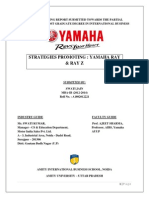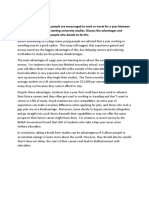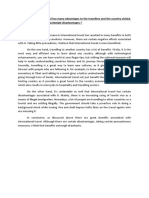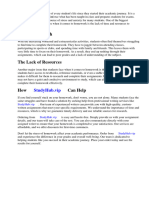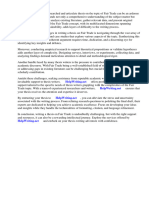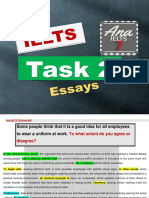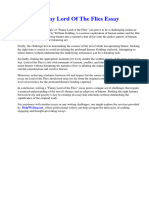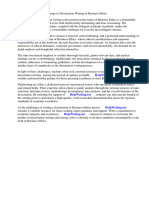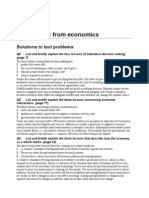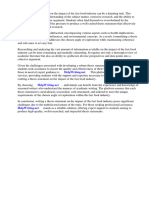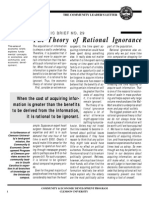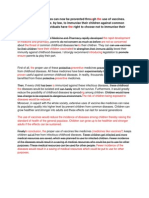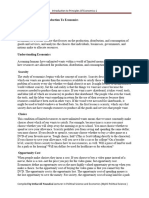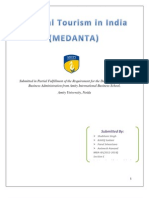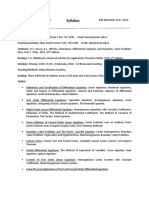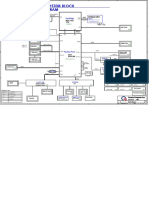(218399336) Article What Is Opportunity Cost
(218399336) Article What Is Opportunity Cost
Uploaded by
Jatin AroraCopyright:
Available Formats
(218399336) Article What Is Opportunity Cost
(218399336) Article What Is Opportunity Cost
Uploaded by
Jatin AroraOriginal Description:
Original Title
Copyright
Available Formats
Share this document
Did you find this document useful?
Is this content inappropriate?
Copyright:
Available Formats
(218399336) Article What Is Opportunity Cost
(218399336) Article What Is Opportunity Cost
Uploaded by
Jatin AroraCopyright:
Available Formats
What is Opportunity Cost?
Paul Hoang of Sha Tin College, Hong Kong, discusses a number of illustrations of the first concept introduced to a new student of economics.
Exam Board AQA Edexcel OCR WEJC CCEA Int. Bacc. AS Unit 1(10.1) 1 2881 (5.1.1) 1(A) 1 Standard 1 A2 Unit
et
children in todays society. But
changes. One demographic change tha t
children because of the high opportunity
The idea that buying a house is the biggest investment most people are likely to make does not take into account the investment Australian parents make in raising their children.
All you need is love and around AUS$450,000 (thats over 191,000!)
Source: AMP (www.amp.com.au), an Australian financial institution
hese quotes refer to the economic costs of raising before we consider this example of opportunity cost we need to define this concept. Opportunity cost is defined as the best alternative that is foregone when making a decision. Due to unlimited resources, such as time and money, we are confronted with choices. The study of economics assumes that people are rational decision makers, i.e. they choose the option that gives them the most benefit. Opportunity cost differs from accountin g costs in that accounting costs do not look at the cost (or value) of foregone choices. For example, if a student decided to go into higher education, the accounting cost would include the tuition fees and other costs associated with studying at university. However, opportunity cost also considers the foregone income that could have been earned had the person chosen to work (the best alternative choice) instead of studying. Of course, the student would hope that by studying for a degree that he or she would earn a higher salary in the future to offset both
S EPTEMBER
2007
become more apparent as can be observed through demographic can be observed in most developed countries is the decline in birth rates. This is largely due to the growing number of women who are choosing to have children at a later age due to their career aspirations. However, the other major reason is to do with the opportunity cost of having and raising children. Some of the expenses that parents might need to fund include a combination of the items in Box 1. The concept of opportunity cost applies to high income earners as well
as those with low incomes. In fact, those with high incomes may have fewer cost of a working parent spending time on a young childs upbringing. There is a larger opportunity cost to the person (such as famous sports women and female celebrities) as they could have earned a lot of money in their profession.
The opportunity cost of time
The phrase Tim e is money is of absolute relevance in the business world. For example, there can be a huge opportunity cost of being late for a job interview, delays caused by traffic
the accounting and opportunity costs associated with studying. Hence, the concept of opportunity cost is useful when assessing the true costs and benefits of competing choices. We now look at various applications of opportunity cost.
The economics of children
Children represent an economic cost. This not only refers to the cost of having and raising children but also the opportunity cost of having children, i.e. what else parents could have done with the money had they chosen the next best alternative. Instead, parents have chosen to spend their time and money on children. Such decisions benefit businesses that are involved in toys, clothing, computer games and accessories, stationery, education and
et
11
sports. There is a huge market to be exploited and companies such as Toys R Us and Mattel have become major global businesses as a result. The opportunity costs of children have
Box 1: The economic costs of having children Hospital fees a private maternal ward at the Matilda Hospital in Hong Kong costs HK$56,000 for three days (that s over 1,300 per day!). In Portland Hospital, London, the cost is between 7,000 and 10,000 depending on the level of service required. Groceries from baby nappies and milk powder to lunchboxes for school. Hobbies many sporting and leisure activities can prove very expensive for participants (and their parents). Private tuition such as private music lessons or academic tuition for exams. Compulsory Education: kindergarten, primary and secondary. Costs might include: uniforms, stationery and textbooks. According to MoneyCentral.com, the cost of education accounts for 7-11% of the average American household income. Private sector education, in boarding schools say, will obviously inflate the costs for parents. British media sources reported that private schooling costs an average of 71,050 for a day student (who returns home at the end of the school day) and an extra 130,450 for a boarding student (who stays on campus). Tertiary education: University fees and maintenance costs, such as rent. In November 2006, The Independent reported that stee p rises in university fees have pushed the average cost of bringing up a child to more than 180,000. University tuition fees were also reported to have increased three times more than the rate of inflation. Deposit for a car/home. Gap year expenses. Holidays additional cost of flights, accommodation and entertainment. Most airlines will charge for children aged 2 and above for a seat ticket. Health services a visit to a private doctor costs HK$350 (approx. 25) for a general consultation that might last no more than 2-3 minutes. Wedding the average cost of a wedding is AU$36,234 (15,400) in Australia (Source: Bride to be magazine, Cost of Love Survey 2004) and US$19,000 (9,600), excluding the honeymoon, in the USA (Source: Brides magazine).
S EPTEMBER
2007
et
11
Those who buy stand-by tickets are valuing cost savings more than convenience.
congestion or missing payment deadlines to a bank. Businesses realise that customers do not like to wait. Minimising waiting time is not always feasible, such as queues at a doctor s clinic. Nevertheless, there are plenty of examples of how businesses put the concept of opportunity cost into practice. Mirrors have long been used in places with lifts (elevators), such as in hotels and department stores. Customers do not necessarily notice the waiting time and hence refrain from being annoyed at the business as they stare at themselves in the mirror! The same reasoning applies when customers enter the lift there are mirrors inside too. Music and entertainment is a major feature at many theme parks. The Disneyland Company tries to reduce time-conscious customers by providing music, live entertainment and use of large movie screens to distract customers whilst they wait in line for thrill rides and other attractions. This all helps to provide a better overall experience for their customers. Whilst waiting at the checkouts at any
supermarket, you may notice the bins next to the counter. These are a last minute attempt by the supermarkets to lure customers to buy miscellaneous items (hence the term bins ) such as confectionery and batteries. The other purpose is, again, to distract people waiting in the queue. In many countries, the multinational Pizza Hut offers their customers free pizza if their order is not delivered within 30 minutes. This practice may give Pizza Hut a competitive advantage over its rivals, initially, but rivals simply copy the idea. Nevertheless, the principle of opportunity cost is again at the centre of this business decision. Table 1: Interest rates for Halifax Stepped Income Reserve savings accounts, from 1st June 2007 Year 1 Year 2 Year 3 Year 4 Year 5 4.95% 5.20% 5.45% 5.70% 8.00%
Source: http://www.halifax.co.uk/ savings/personalrates
Airline companies often overbook the number of seats of a flight. This is because, statistically, flights are rarely booked at full capacity. However, as a result of the policy, sometimes airlines face the problem of overbooking and will need to bump customers, i.e. to offer them compensation for having to wait for the next available flight. To the person who values time less conscientiously, they may purchase a stand-by ticket which is cheaper but more inconvenient. Public transport has also been targeted by the business world. Television advertising is now quite common on buses and trains. This not only helps the transport companies, such as Virgin Trains, to receive advertising revenue, but may also distract travellers from counting the minutes on a journey, thereby making the experience a little more enjoyable. Women s clothes retailing is a massive business. However, women are often accompanied by their husbands and boyfriends who tend to have less patience in a shopping mall look out for this trend next time you are out shopping! Marketers have noticed this fact and have responded. Many retail outlets now provide newspapers and male-orientated publications (such as motor vehicle or male fashion magazines) so that the girlfriend or wife can shop in peace! The retail outlets, of course, hope that this strategy will then allow the customers to spend much longer in their shops, thereby increasing the chance of more sales. Banks make their money mainly by lending the deposits from their savers. Hence, they will reward the savers that can lend the bank money for a longer period of time. Savings accounts that are instant access (savers can take their money out without any notice) attract a lower interest than deposits made in a longterm savings account. At the time of writing, a HK$1,000,000 deposit (approx. 70,000) at HSBC in Hong Kong will give a return of 2.75% whereas the same deposit for two years gives the saver 3.55% per annum. So, time really is money in the business world. Similarly, Table 1 shows the various rates of interest for savings with Halifax plc (one of the UKs largest mortgage providers). As can be seen, the longer someone
12
et
S EPTEMBER
2007
saves their money, the greater the return on their money. 7-Eleven stores, the Japanese-owned multinational company, charges higher prices than supermarkets for the same products. The surcharge is justified as most of their stores are open 24-7 and so customers are expected to pay for this convenience and the opportunity cost of having to pay higher wages to staff who work unsociable hours. Customers are also likely to be willing to pay more for their own convenience of being able to purchase items from 7-Eleven when other retail outlets are closed. Opportunity cost also extends to the health care industry. There are huge waiting lists in the National Health Service, which is funded by taxpayers and provided by the public sector. However, if a patient chooses to go private then he or she may even be seen right away by a doctor. This, of course, comes at a price but again the example shows that the concept of opportunity cost is at play. London congestion charging came into effect in February 2003. This meant that drivers entering the controlled zone at peak times in London were charged 5 per day. Within a few months, traffic had fallen by around 20%. The charge (or tax) has since been raised to 8 per day. Motorists, as a result, have to ask themselves whether the congestion charge is a price worth paying. The opportunity cost may be that the 8 could have been better spent on something else, such as a meal in which case the rational motorist would choose not to drive into Central London. However, if the opportunity cost was delivering valuable stocks to an important client, then the 8 charge may be minuscule. Supermarkets in the UK realised the opportunity cost of being closed on Sundays. It was not until the mid1990s that supermarkets went against government advice and began to trade on Sundays. They were fined for such actions, as licensing to trade on Sundays had not been enacted, but the fine was so insignificant compared to the revenues that they were earning by opening on Sundays that the supermarkets continued with this practice. Banks in Hong Kong are currently contemplating opening on Sundays.
Even governments are waking up to the opportunity cost of neglecting the environment. In February 2006, The Daily Telegraph discussed whether parents who use reusable nappies for their babies should receive cash benefits. This could give parents an incentive to switch away from disposable nappies which are not biodegradable. The Republic of Ireland has used a plastic carrier bag tax since 2002. The opportunity cost of not bringing your own bag (i.e. not recycling carrier bags) is the tax paid on each bag issued by a retailer. The BBC reported that this act has led to millions of euros in tax revenues and a 95% fall in the use of plastic carrier bags.
Questions for discussion
1. What is meant by the concept of opportunity cost? 2. Why do children present an opportunity cost to their parents? 3. If opportunity cost cannot be accurately measured, does this mean it has limited use? 4. Why do banks tend to offer higher rates of interest for customers who cannot have instant access to their savings? 5. To what extent does an understanding and awareness of opportunity cost help to reduce environmental damage?
Summary of key points
Opportunity cost is the cost measured in terms of the next best option that is foregone when making a decision. Opportunity cost is at the heart of decision making, whether there is a conscious or subconscious awareness of the concept. Due to scarce resources, including time and finance, competing decisions need to be made and any decision that involves a choice between options will incur an opportunity cost. Children are big business in todays modern society. Parents are more than willing to make sacrifices for their children. These sacrifices represent the opportunity cost of choosing to have children; the money that could have been spent on the best alternative if parents did not have children. Knowledge of opportunity cost, even if it cannot be calculated precisely, allows decision makers to gain better insight into the real costs of their choices and not just their monetary costs.
with Chief Examiner, Robert Nutter
2. The Office of Health Economics has a schools website entitled: The Economics of Health Care U (www.oheschools.org). Using the I site research the importance of Beach Time (hours) opportunity cost in health care and how quality adjusted life years (QALYs) can be used by health professionals to make decisions on treatment.
S EPTEMBER
2007
et
Amusement Park Time (hours)
1. Investigate the importance of indifference curves and budget lines in consumer preference theory, and relate them to opportunity cost.
13
You might also like
- Finance 101 for Kids: Money Lessons Children Cannot Afford to MissFrom EverandFinance 101 for Kids: Money Lessons Children Cannot Afford to MissRating: 4.5 out of 5 stars4.5/5 (4)
- An Introduction To Korean LinguisticsDocument286 pagesAn Introduction To Korean LinguisticsNot RealNo ratings yet
- 7P's of Marketing Mix (PIA) Pakistan International Airlines Marketing ProjectDocument14 pages7P's of Marketing Mix (PIA) Pakistan International Airlines Marketing ProjectSaad Bin Mehmood78% (27)
- Sample For Solution Manual Economics Global Edition by Daron Acemoglu & David LaibsonDocument14 pagesSample For Solution Manual Economics Global Edition by Daron Acemoglu & David LaibsonmunamboutiqueNo ratings yet
- Quiz No. 1Document14 pagesQuiz No. 1Dan RyanNo ratings yet
- Internship Report of YAMAHADocument91 pagesInternship Report of YAMAHAJatin Arora83% (6)
- Asteroid Online Calculator, Asteroids in Astrology Natal ChartDocument1 pageAsteroid Online Calculator, Asteroids in Astrology Natal Chartezgi özkılınçNo ratings yet
- Uptu B.tech 2nd Year SyllabusDocument16 pagesUptu B.tech 2nd Year SyllabusPrakash KumarNo ratings yet
- First OutlineDocument7 pagesFirst Outlinedinhthien1016No ratings yet
- Writing FullDocument32 pagesWriting FullNguyễn Hương LyNo ratings yet
- Exercise 2, Basic MicroeconomicsDocument1 pageExercise 2, Basic MicroeconomicsShane BagaporoNo ratings yet
- Opportunity CostDocument12 pagesOpportunity Costsowmya100% (2)
- Opportunity CostDocument12 pagesOpportunity CostKathuria AmanNo ratings yet
- Answers in ExamDocument4 pagesAnswers in ExamIvy Mae AninonNo ratings yet
- Student Book 1Document30 pagesStudent Book 1Ahmed DanafNo ratings yet
- IAS Economics - Student Book Answers - Unit1 PDFDocument65 pagesIAS Economics - Student Book Answers - Unit1 PDFWandaNo ratings yet
- Banking: Banks Are Financial Institutions That Provide Customers With A Variety of ValuableDocument5 pagesBanking: Banks Are Financial Institutions That Provide Customers With A Variety of ValuableSofia MedizaNo ratings yet
- Microeconomics End QuestionsDocument5 pagesMicroeconomics End QuestionsJAMILLE BAUTISTANo ratings yet
- Essay On WritingDocument13 pagesEssay On WritingJeevan Phani Sreeram CharugallaNo ratings yet
- Selling Higher Education Is Much Sleazier Than Selling Used CarsDocument9 pagesSelling Higher Education Is Much Sleazier Than Selling Used CarsThavam RatnaNo ratings yet
- Tesco Stuck On HomeworkDocument6 pagesTesco Stuck On Homeworkafnoawnnaeykxk100% (1)
- 展开方法 归纳、对比、引用Document41 pages展开方法 归纳、对比、引用shuyu.violinNo ratings yet
- Prosper Chapter9Document18 pagesProsper Chapter9Adam Taggart100% (1)
- Research Paper About College TuitionDocument5 pagesResearch Paper About College Tuitionefdkhd4e100% (1)
- Thesis Fair TradeDocument8 pagesThesis Fair Tradelauralewisportland100% (1)
- Term Paper International EconomicsDocument5 pagesTerm Paper International Economicsafmzkbysdbblih100% (1)
- UntitledDocument5 pagesUntitledNihal YousifNo ratings yet
- IELTS Writing Task 2Document34 pagesIELTS Writing Task 2Nguyễn Phương ThảoNo ratings yet
- Book Review - FreakonomicsDocument5 pagesBook Review - FreakonomicsJasfher CallejoNo ratings yet
- Home Economics A Level CourseworkDocument7 pagesHome Economics A Level Courseworkbcrqs9hr100% (2)
- GE Chapter 01 Solutions - FMTDocument6 pagesGE Chapter 01 Solutions - FMTmunamboutiqueNo ratings yet
- Term Paper Ideas For EconomicsDocument7 pagesTerm Paper Ideas For Economicsafmzveozwsprug100% (1)
- Desy Wahyu Rahmawati Imabs A (20180410104) : Economics AssignmentDocument5 pagesDesy Wahyu Rahmawati Imabs A (20180410104) : Economics AssignmentDesy Wahyu RahmawatiNo ratings yet
- Tong Hop 500 Bai Viet Mau Ielts Writing Band 8 0Document369 pagesTong Hop 500 Bai Viet Mau Ielts Writing Band 8 0Thi ViênNo ratings yet
- Funny Lord of The Flies EssayDocument5 pagesFunny Lord of The Flies Essayezmnf1ew100% (2)
- Ap. - Lesson 2 - NOTESDocument4 pagesAp. - Lesson 2 - NOTESfeyungNo ratings yet
- Dissertation Topics Business EthicsDocument4 pagesDissertation Topics Business EthicsPayForAPaperBuffalo100% (1)
- Scarcity and The World of Trade-Offs: Applied EconomicsDocument35 pagesScarcity and The World of Trade-Offs: Applied EconomicsMari NelleNo ratings yet
- Economics Coursework ExamplesDocument6 pagesEconomics Coursework Examplesf5dvx95v100% (2)
- Chapter 01 Solutions - FMTDocument7 pagesChapter 01 Solutions - FMTOscar Neira CuadraNo ratings yet
- Teks Soal HortatoryDocument8 pagesTeks Soal Hortatoryprima gunadiNo ratings yet
- Econ Answers DetachDocument31 pagesEcon Answers DetachllllNo ratings yet
- Read The IELTS Advertising EssayDocument19 pagesRead The IELTS Advertising EssayFatima WazirNo ratings yet
- Presentation 1 - IntroductionDocument8 pagesPresentation 1 - IntroductionRohini SahaNo ratings yet
- Ten Lessons From Economics: Solutions To Text ProblemsDocument5 pagesTen Lessons From Economics: Solutions To Text ProblemsterrancekuNo ratings yet
- Thesis Sentence For Impact of The Fast Food IndustryDocument7 pagesThesis Sentence For Impact of The Fast Food Industryjessicamoorereno100% (2)
- Review of Related LiteratureDocument5 pagesReview of Related LiteratureFie M. BatuctocNo ratings yet
- Economic Analysis 1Document11 pagesEconomic Analysis 1mani_hashmiNo ratings yet
- Economic Brief No. 29Document1 pageEconomic Brief No. 29aditya jagadeesanNo ratings yet
- Netherlands Term PaperDocument7 pagesNetherlands Term Paperea84e0rr100% (1)
- Some People Believe That It Is Good For A Country To Host A Major Sports CompetitionDocument34 pagesSome People Believe That It Is Good For A Country To Host A Major Sports Competitionchiennguyen5981No ratings yet
- U The,, TheDocument6 pagesU The,, TheAdel AnsariNo ratings yet
- AP Micro Summer ReadingDocument45 pagesAP Micro Summer ReadingCamille EscoteNo ratings yet
- IELTS SAMPLE TASK2 ESSAYS From The Official Cambridge GuideDocument7 pagesIELTS SAMPLE TASK2 ESSAYS From The Official Cambridge GuideDanielle TracieNo ratings yet
- International Islamic University Islamabad: Summary of 10 Principles of EconomicsDocument7 pagesInternational Islamic University Islamabad: Summary of 10 Principles of EconomicsWahaj AhmedNo ratings yet
- 9 Bands Task 2Document39 pages9 Bands Task 2syed Muhammad UsmanNo ratings yet
- Essay LanguageDocument5 pagesEssay LanguageLaNo ratings yet
- Ial Economics SB 1 AnswersDocument153 pagesIal Economics SB 1 AnswersSyeda Malika AnjumNo ratings yet
- Ielts Writing SamplesDocument13 pagesIelts Writing SamplesGramtks GrandNo ratings yet
- CH 01Document8 pagesCH 01akhlaqNo ratings yet
- Price Discrimination Research PaperDocument5 pagesPrice Discrimination Research Papertmiykcaod100% (1)
- EconomicsDocument105 pagesEconomicsPolitical PhilosophyNo ratings yet
- Economics Coursework QuestionsDocument7 pagesEconomics Coursework Questionsf5dgrnzh100% (2)
- Research Paper Topics On SweatshopsDocument4 pagesResearch Paper Topics On Sweatshopsgw2x60nw100% (1)
- Test 1 Part 1 P. 22 Ways of Encouraging Young People To Study ScienceDocument7 pagesTest 1 Part 1 P. 22 Ways of Encouraging Young People To Study ScienceAngelica LupuNo ratings yet
- Lecture 1Document24 pagesLecture 1DJ-Raihan RatulNo ratings yet
- Louis Vuitton in India: Kwansei Gakuin University, Institute of Business & Accounting, International Management CourseDocument5 pagesLouis Vuitton in India: Kwansei Gakuin University, Institute of Business & Accounting, International Management CourseJatin AroraNo ratings yet
- Impact of Culture On Business Negotiations (Keeping in Mind US and Sweden Businessmen)Document33 pagesImpact of Culture On Business Negotiations (Keeping in Mind US and Sweden Businessmen)Jatin AroraNo ratings yet
- Submitted BY: Jatin Arora Mohit Gupta Mukul GuptaDocument38 pagesSubmitted BY: Jatin Arora Mohit Gupta Mukul GuptaJatin AroraNo ratings yet
- White Collar Crimes FinalDocument25 pagesWhite Collar Crimes FinalJatin AroraNo ratings yet
- Medical TourismDocument20 pagesMedical TourismJatin AroraNo ratings yet
- AmeripriseDocument6 pagesAmeripriseJatin AroraNo ratings yet
- Enduring Understanding & Essential Questions:: "To Do"Document6 pagesEnduring Understanding & Essential Questions:: "To Do"lggonzabaNo ratings yet
- Prompt Engineering - OpenAI APIDocument20 pagesPrompt Engineering - OpenAI APIrupaprusty81No ratings yet
- Monique Rathbun v. Scientology: Steven Gregory Sloat AppealDocument52 pagesMonique Rathbun v. Scientology: Steven Gregory Sloat AppealTony OrtegaNo ratings yet
- Freezing TechnologyDocument66 pagesFreezing TechnologyGurpreet KaurNo ratings yet
- LEAB ABC ChargersDocument12 pagesLEAB ABC Chargersmna478No ratings yet
- Guide For Scaffolds and Other Elevated Work PlatformsDocument80 pagesGuide For Scaffolds and Other Elevated Work Platformsal bauerNo ratings yet
- Chapter 3: Transformer: Electrical MachineDocument39 pagesChapter 3: Transformer: Electrical MachineThe zeroNo ratings yet
- A Detailed Experimental Analysis of Air Steam Gasification in A Dual Fired DowndraftDocument16 pagesA Detailed Experimental Analysis of Air Steam Gasification in A Dual Fired DowndraftWahyu AjiNo ratings yet
- Ipagbunyi Ang Kristong Hari - Ali IzonDocument5 pagesIpagbunyi Ang Kristong Hari - Ali IzonServi Dei ChoraleNo ratings yet
- CLA Electric Bill Receipt Paid DT 210720Document1 pageCLA Electric Bill Receipt Paid DT 210720Puneet GurnaniNo ratings yet
- Narrative EssayDocument7 pagesNarrative EssayHumbleSiryaNo ratings yet
- Music TheoryDocument553 pagesMusic TheoryViceNo ratings yet
- Surface Phenomena PDFDocument5 pagesSurface Phenomena PDFDurga Prasad KalamNo ratings yet
- Malaysia Asean Math Olympiads: Rules and RegulationsDocument7 pagesMalaysia Asean Math Olympiads: Rules and RegulationsKarren Cacabelos SurNo ratings yet
- Bebe4c00101 20430583 L221PBCDocument6 pagesBebe4c00101 20430583 L221PBCRasulovsNo ratings yet
- Syllabus: PHYS 209Document2 pagesSyllabus: PHYS 209Metehan KaraNo ratings yet
- Efficient Python Tricks and Tools For Data Scientists - by Khuyen TranDocument20 pagesEfficient Python Tricks and Tools For Data Scientists - by Khuyen TranKhagenNo ratings yet
- Lecture 3 Bilinear TFDocument32 pagesLecture 3 Bilinear TFNathan KingoriNo ratings yet
- Curriculum Map Science PreK 3Document1 pageCurriculum Map Science PreK 3Qhutie Little CatNo ratings yet
- Wrongful Foreclosure SurveyDocument2 pagesWrongful Foreclosure SurveyForeclosure FraudNo ratings yet
- Quanta Z09 Rev. 3ADocument40 pagesQuanta Z09 Rev. 3ALute Marin HernandezNo ratings yet
- 1 Kinetics From Chemistry Atoms First 3e 2018 Burdge-Overby PDFDocument64 pages1 Kinetics From Chemistry Atoms First 3e 2018 Burdge-Overby PDFMiemma Puenya Leo100% (1)
- Beamforming Overview DL and UL Beamforming Performance ConclusionsDocument37 pagesBeamforming Overview DL and UL Beamforming Performance ConclusionsAhed AlhamadeenNo ratings yet
- Balance SheetDocument1 pageBalance SheetMCOM 2050 MAMGAIN RAHUL PRASADNo ratings yet
- Enlightenment: Is An Ordinary Life Lived in An Extraordinary Way!Document55 pagesEnlightenment: Is An Ordinary Life Lived in An Extraordinary Way!Jayashree Bho100% (1)





